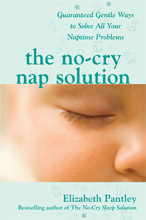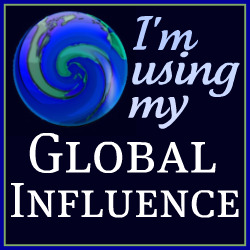As the mother of two little boys, I have learned to expect anything. My oldest, NHL, is five years old. When he was younger, he craved naps. We would always know when he was tired and ready to rest. Each morning at the same time, he would go to sleep with no major battles. NHL switched to afternoon naps at daycare when he was two. The summer before he started PreK NHL was still taking naps. Then, when he started school "poof" the naps were gone. Rather than nap he would go to sleep earlier and was a very happy and well rested little guy.
Of course, I always assumed that since my oldest napped easily that the little guy would. In hind sight, I should have assumed it would be the opposite. My little guy has always kept me on my toes. Napping has been no different. JSL is 20 months old now and showing his independence. He wants to see, touch, explore and do everything. He is afraid of missing things when big brother is home from kindergarten. The boys share a room, so getting JSL to sleep in his crib at night on his own is a tough. If he cries, jumps up and down, or fusses too much he will not allow NHL to get rest. Thanks to this, JSL usually falls asleep in our bed.
Although falling asleep in our room is not a big deal, it does cause some complications come nap time. JSL is used to falling asleep with my husband or myself. Settling in his crib was not something that he knew how to do. He would hoot, holler, jump up and down and shake from crying so much. A mommy can only handle so much of this.
At just the right time I was asked to review The No Cry Nap Solution by Elizabeth Pantley. Pantley is the bestselling author of The No-Cry Sleep Solution that many of my friends have used over the years.
Right when the book arrived, JSL’s naps became erratic at best. He would fight sleep, cry if we walked toward his room, and wake within 20-30 minutes of being in his crib. Some days he would settle for a nap on his own, other days he would fall asleep nursing and be transferred to his crib. The lack of a consistent nap was starting to take its toll on everyone in the family.
Pantley begins the book with a chapter dedicated to the importance of naps and how much sleep children need. She explains that although naps only take a short time during the day, they help to shape the rest of the hours within the childs day. The following are some of the ways that Pantley says that naps benefit children:
- Naps are a biological necessity.
- Naps reduce the day’s fussiness, whining, and tantrums.
- Naps increase learning capacity for babies.
- Naps fill gaps from poor nighttime sleep.
- Naps improve a child’s mood.
- Naps improve brain development.
- Naps improve the bedtime routine.
- Naps increase attention span.
- Naps ensure proper growth and development.
- Children’s naps give caregivers a needed break.
- Naps are beneficial for people of all ages.
Reading those words made me think about my little guy who was quickly becoming a reluctant napper. On those days that he napped well his mood was better, he was more focused on his play, he went to sleep easier at night, and yes I received a break to get things done (most impressed that the caregiver was included).
Pantley makes it clear that, as the parent/caregiver, you must be aware of the signs that your child is tired.Trying to get a child that is not tired, or even overtired, to nap can be next to impossible. I started keeping notes about troubles we were having at nap time. I wrote whether or not he had slept well the previous night, what time he was up in the morning, and how active he had been before putting him into his crib for a nap. After a while, I started to recognize JSL’s signs that told me he was ready for a nap. He rubbed his eyes, he slowed down, he went to the couch to rest. I learned that that was my key time to get him into his crib. If I waited too long, he would get a second wind of sorts and go into overtired mode.
When I knew it was time and put him into his crib, he would usually settle quickly. The problem soon became staying asleep. He would wake 20-30 minutes into a nap and fuss. Of course I would run into his room to check on him. That was my mistake. While reading the book I found out that the sleep cycles often mean that he would fuss. When I walked in and JSL saw me, he would pop up. If I stayed away and let him self soothe again he would typically nap another hour or more. Lesson learned.
So far many of our nap dilemas with a toddler have been helped with the chapter called The Nap Resister – When Your Child Needs a Nap but Won’t Take One. Whether it was inconsistent nap schedule, looking for tired signs, being too busy, coping with separation anxiety. Pantley suggests items and helps the reader to become in tune with your children. Never do you feel pushed in one direction or another because she always notes that each child and family is different.
I believe that we are well on our way to helping JSL to become a better toddler napper. Thanks to The No-Cry Nap Solution, I have a fabulous resource available when a new nap time situation rises. I highly recommend this book for new parents and those that have children who are also resistant nappers. The book is available on Amazon.com for $10.85 with free shipping and would make a great baby shower gift. I know that when we get back from our vacation I will begin reading The No-Cry Potty Training Solution also by Elizabeth Pantley.

Thank you to Elizabeth Pantley and the Family Review Network for this wonderful review opportunity.
![]()







Sounds like the book has been a big help with getting JSL to nap. My boys are the reverse of yours – Alex was a terrible napper and gave them up by the time he was 2. Zach doesn’t love naps, but he’s so much easier to get to nap and he takes nice long ones, usually 1-2 hours. He goes down shortly after lunch and doesn’t take long to fall asleep.
I loved No-Cry Sleep, and may have to check out No-Cry Potty soon too.
I read the no cry sleep solution when Baby Sister was only a month or two old.We were a little desperate. But she sleeps like a gem now. :)